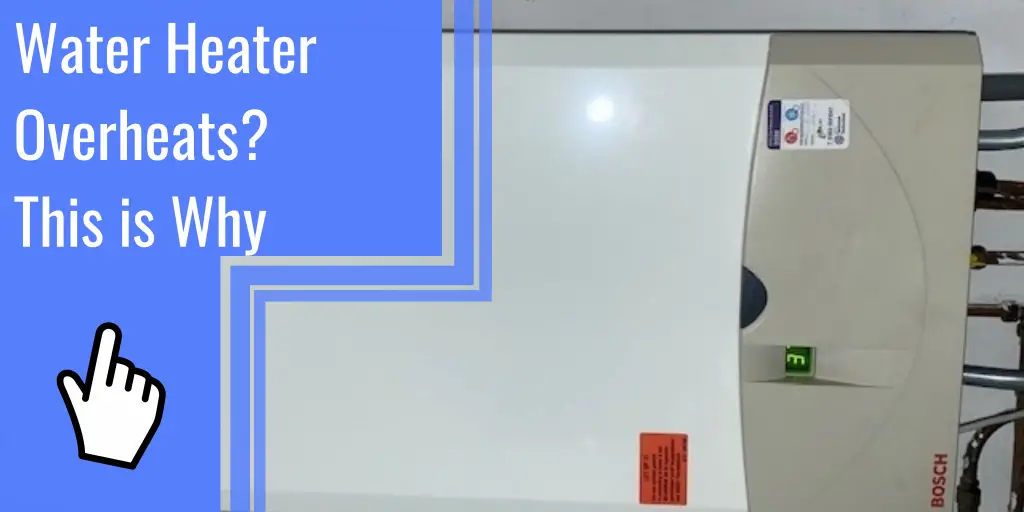What you find on this page:
If you’ve ever taken a shower only to be unpleasantly surprised by a blast of scalding hot water, you’ve probably wondered why your water heater overheats.
A sudden blast of steaming hot water that’s too hot can be a burn hazard in more extreme situations, especially if a child is an unfortunate victim.
But, what is it that causes a gas or electric water heater to become too hot suddenly?
Why Does the Water Heater Overheat?
Water heaters aren’t particularly complicated machines, but a lot can go wrong over their decade-long lifespan.
As the different components and fixtures wear out, homeowners should be proactive in repairing them if they want to get as many years as possible out of this critical home appliance.
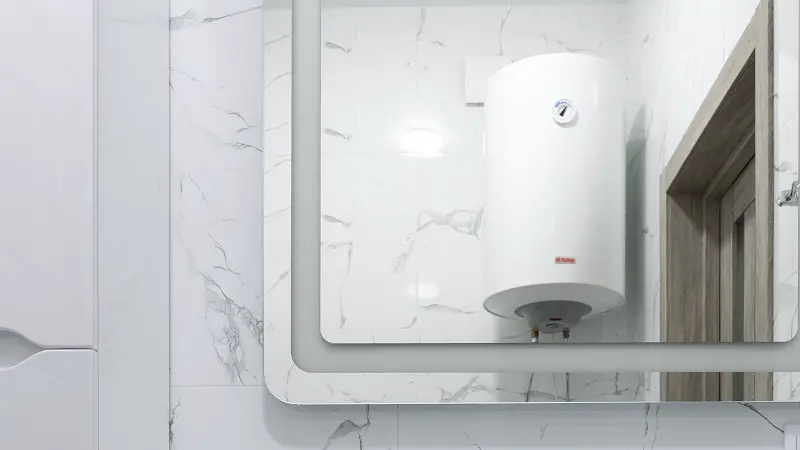
Gas Water Heater is Too Hot
A gas water heater works because of convection, where colder, denser fluids sink and warmer, less dense fluids rise.
When cool water enters the water heater from the water main, well, or another source, a burner heats the water, causing it to rise to the top of the tank as more cool water flows in.
At the top of the tank, another pipe releases the now hot water all the time into the home’s central plumbing system.
Like electric water heaters, gas water heaters have an adjustable thermostat that flips the burner off and on depending on the temperature of the water inside the tank.
Malfunctioning Thermostat
One of the most important safety functions that come standard with water heaters is a thermostat that will automatically shut off the elements when water hits the preset temperature.
When the thermostat malfunctions, it doesn’t turn off the water heater, allowing the heating elements to continually warm the water, creating unbearable temperatures and a gas water heater that is overheating.
You may also notice that you spend more time at the fusebox because the water heater thermostat keeps tripping the breaker.
Replacing a gas water heater thermostat is easily done, as long as you remember to flip the breaker off to prevent the risk of electric shock. Just be sure to snap a picture of the thermostat’s wiring before you start so that you can rewire everything safely.
Temperature is Set Too High
Most thermostats keep water between 120-140 degrees because this temperature is warm enough to prevent bacterial growth but not so warm as to cause burns.
For some families, though, the upper limit of 140 degrees is far too hot for their personal comfort, even when the valves temper it down to 120 degrees on the way out of the tap.
This is an easy fix, as gas water heaters have an easily accessible thermostat to lower the upper-temperature limit and shut off the burners sooner.
Hard Water Mineral Build Up
Depending on the makeup of the water where you live, your home may have a hard water supply.
Minerals are present in hard water that your area’s water treatment plant or your home’s well water pump didn’t filter out.
Over the life of your water heater, this sediment collects inside of your tank, forming an ever-growing layer of hard material at the bottom, where the burners are.
Because the burners have to work so much harder to heat the water, the burners will stay on much longer. The internal probe can’t accurately read the interior temperature, resulting in dangerously high temperatures.
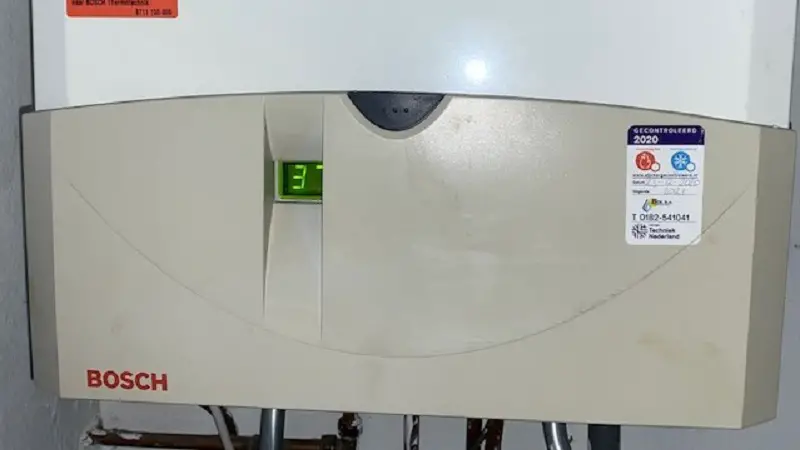
Electric Water Heater is Too Hot
Electric water heaters work in much the same way as gas water heaters. The main difference is that electric heaters don’t have a burner at the bottom of the tank.
Instead, a heating element in the middle of the tank transfers thermal energy into the water.
Dirty Heating Element
Hard water can still cause problems for electric water heaters becoming too hot as mineral deposits build up on the heating elements.
The electric heating elements stay on longer and get hotter because the buildup blocks an accurate temperature reading.
They run for longer and longer periods, creating water that is too hot in the house before eventually shorting out.
Once the element is severely damaged, you’ll find that your water heater keeps tripping the fuse.
Damaged Pressure Relief Valve
If you’ve ever used a pressure cooker, you have some understanding of the scientific law that as temperature increases, so does the pressure within a container.
The same is true in reverse: As pressure increases, so does the temperature.
To prevent dangerous pressure levels above 150 psi, in most cases, electric water heaters include a valve that opens up to release some of that pressure until everything returns to safe levels.
Often, homeowners are concerned if they see water around the valve, but some moisture is a good sign.
It indicates the relief system is working as intended, releasing a small amount of water to drop the pressure.
However, too much moisture indicates that the seal is not seated correctly or broke, allowing more water than you want to leak out as the psi increases.
When your water heater has a faulty pressure valve that doesn’t open appropriately, the temperature and psi will continue to rise.
Faulty Tempering Valve
Tempering valves are a relatively new safety measure that stops water from pouring out of your tap at the maximum set temperature.
Each time you use your hot water supply, it is mixed with cooler water to drop the temperature to safer levels, usually closer to 120 degrees. This sudden cooling is all thanks to your electric water heater’s tempering valves.
Tempering valves are sensitive to high temperatures and can auto-adjust the amount of cold water added into the stream flowing to your home’s pipes.
As the hot water flows past the valves, they open up to change the ratio of hot to cold water, creating a more tolerable final temperature.
When an electric water heater starts to overheat, your tempering valves may be the root of the problem. If they are not working correctly, they cannot adjust the ratio precisely. That means much warmer water than you’re used to flows from your taps.
Like all plumbing components, the constant erosion caused by water moving through the valves can wear them down. Eventually, these valves become less effective at detecting high temperatures and opening to mix in cooler water.
When that happens, you are at risk of exposing your skin to the water heater’s suddenly scalding hot temperatures.
Because tempering valves wear out every 5-7 years, you will likely need to replace them before the end of your water heater’s life.
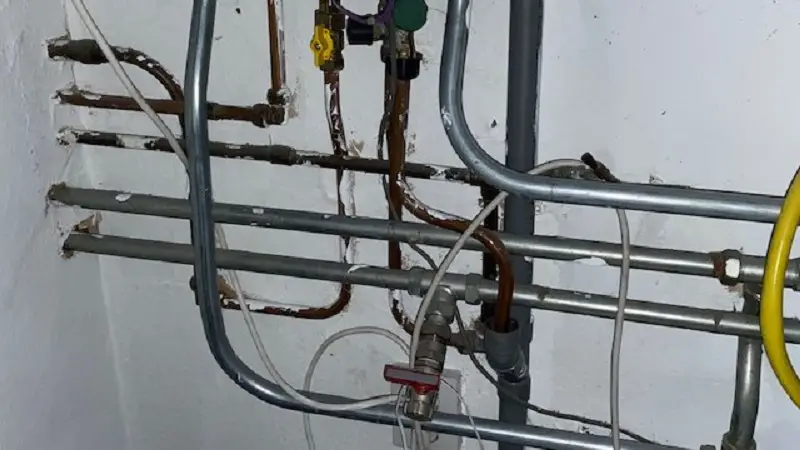
When to Replace Your Water Heater
It’s tempting to wait until something goes wrong to replace your water heater, but you may soon regret that plan if there are no local plumbers available or a slow leak causes mildew in your subflooring.
Instead, watch out for signs that the appliance is on its way out so that you can complete the swap before more significant problems arise.
One good rule of thumb is that most water heaters last 8 to 10 years.
Once you hit eight years old, keep an even closer eye on it, so you can catch any hiccups that indicate an early expiration is on the horizon.
Rusty Water, Pipes, or Valves
Once you see iron oxide buildup on external plumbing components or detect the tell-tale reddish-brown hue in your water, there’s a good chance that the inside of your water heater is rusting.
Water Heater No Longer Producing Hot Water
In some cases, a lack of warm water means a simple thermostat adjustment or heating element replacement is necessary.
In other cases, your water heater may be too small for your home and unable to produce the volume of hot water your family requires.
When a water heater is too small for the home, families will see an increase in their electricity bill as the appliance stays on constantly, trying to keep up with demand.
Water Around the Base of the Heater
Unless you just spilled something near your water heater, puddles are bad news.
Whenever metal heats up, it expands. Over time, the stress from the expansions can cause hairline cracks in the steel tank that leak water each time the water heater’s temperature increases.
Be very careful with leaks, both big and small. Slow drips can do untold damage to your flooring, walls, and foundation as mold takes hold, while a sudden, large leak can destroy the carpet, ruin electronics, or flood small rooms.
Strange Noises
Water heater tanks can rumble and groan as they spring to life, pumping hot water into your home, but those noises tend to grow louder over time.
Eventually, the gentle hum becomes a full-fledged growl as hard water sediment buildup clangs against the sides of the tank.
Be sure to flush out your tank to get rid of mineral deposits, or you risk the sediments building up in layers, compromising the integrity of your tank.
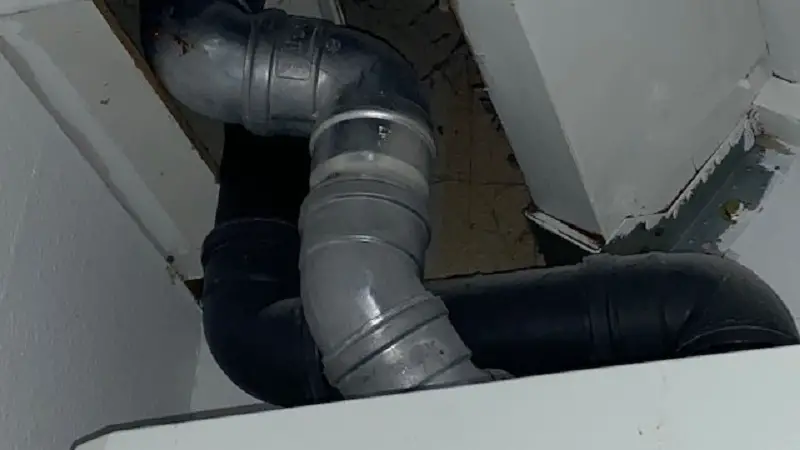
Conclusion
Depending on whether your home connects to a gas or electric heater, several issues could cause a sudden uptick in temperature.
Before you gut your tank and start over, check for these common problems that could be the culprit.
If you’re not experienced with home repairs, be sure to speak with a professional before working with water heaters, and always flip the breaker before attempting maintenance.
The mixture of water and electricity can be hazardous, so the safest option is to cut power flow.

